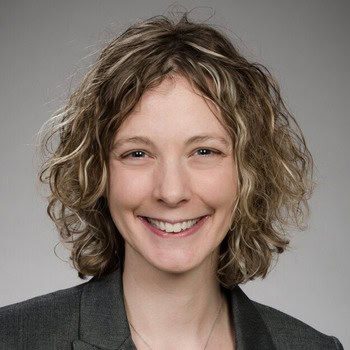
$10.5M biomaterials center to connect researchers, fund innovation and fight resource discrimination
Building on a network of biomaterials researchers and the success of a seed grant effort, U-M and UW lead a new NIH-funded center.

Building on a network of biomaterials researchers and the success of a seed grant effort, U-M and UW lead a new NIH-funded center.
Written by Kate McAlpine.
Simultaneously advancing biomaterials research with clinical applications and connecting researchers at well-resourced institutions with those rich in diverse talent is the aim of a $10.5 million center supported by the National Institutes of Health.
The Humanity Unlocking Biomaterials center, led by the University of Michigan and University of Washington, is designed to spur the development of biomaterials solutions that have potential in medical treatments by bringing together researchers and providing seed funding to kickstart projects. The proposal invokes a concept from the Black feminist thinker bell hooks, known as centering margins. If rapid progress is to be made, those who occupy positions of power at the center of the group must partner with and make space for those at the margins.
HUB center leads Lola Eniola-Adefeso, the Vennema Endowed Professor of Chemical Engineering at U-M, and Kelly Stevens, the James Chao-Yao Koh and Maria Lee Koh Endowed Engineering and Medicine Career Development Professor at the University of Washington, argue that this works two ways in biomaterials.


“We have materials like hydrogels, degradable polymers, that we’re comfortable with, and we’ve been using those for two, three decades now—but there has been very limited translation,” Eniola-Adefeso said. “We make the case that we simply need to grab people who are at the margins of biomaterials, who could plug in and accelerate the research.”
They will seek out scientists and engineers whose work isn’t necessarily specific to biomaterials but could apply to the field. These folks may be in computation and AI, active materials or synthetic proteins, for example. The bet is that new avenues for biomaterials are emerging and could progress quickly if the right connections are made.
Eniola-Adefeso and Stevens also aim to address the way that biomaterials—like many other fields related to science, technology and medicine—historically exclude Black, Latino and Indigenous individuals. Here, progress is slow because demographic outsiders are expected to push their way into a center where no space has opened for them, they say.

“One way that the HUB will address this disconnect is by funding the participation of students and faculty at minority-serving institutions. An example is Heritage University in Washington state, one of only two universities in the country that is both a Native-American-serving Non-Tribal Institution and Hispanic-Serving Institution,” Stevens said. “This will be a chance for our biomaterials field to learn new ways of thinking and welcome students from this exceptional university to the center of our field.”
A key aspect of the HUB center is to open that space through connection. Already, Eniola-Adefeso and Stevens run a Slack channel of more than 400 biomedical researchers. That channel supports active discussions about projects and project concepts like those they hope to foster with the HUB center. While HUB’s leaders haven’t decided whether to continue in that channel or create a new forum, year-round informal communication is part of the plan.
In addition, the center will host in-person annual meetings to assess research directions, spark partnerships and distribute $5.7 million in seed grant money. The leads envision sessions where outsiders to biomaterials present on tools and approaches—and sessions like Shark Tank where researchers pitch ideas live.
Beyond communication and direct funding, the most well-resourced universities have committed to provide time at their facilities to HUB center participants. This is particularly helpful for those whose institutions were initially organized around teaching, with less existing research infrastructure—including Historically Black Colleges and Universities.

Over its five-year run, the HUB center will also produce white papers laying out research directions that the participants identify as likely to be fruitful.
Eniola-Adefeso and Stevens are building on their experience distributing seed funds from a $500,000 grant from Genentech, which followed their 2021 call to action about the funding disparity faced by Black biomedical researchers. At the time, they had found that Black biomedical researchers submit about five grant applications for every three that white researchers submit to get the same number of awards. To partially address this, they distributed grants of $50,000 to 10 Black researchers whose applications for R01 grants, roughly $500,000 each, had been rejected by the NIH.
“I’m happy to say, I believe 100% have subsequently got an R01 or something of that size,” Eniola-Adefeso said.
These successes underscore the case that Eniola-Adefeso, Stevens and their colleagues made in the #FundBlackScientists campaign: It’s not that the ideas aren’t good—it’s that the researchers aren’t playing on an even field. With the new HUB center, they intend to continue democratizing participation and resource access in biomaterials.
The HUB center is a Biomaterials Network Technology Development Coordinating Center sponsored by the National Institute of Biomedical Imaging and Bioengineering.
Eniola-Adefeso is also a University Diversity and Social Transformation Professor and a professor of macromolecular science and engineering and biomedical engineering. Stevens is also an associate professor of bioengineering, a joint department of the UW School of Medicine and the UW College of Engineering.